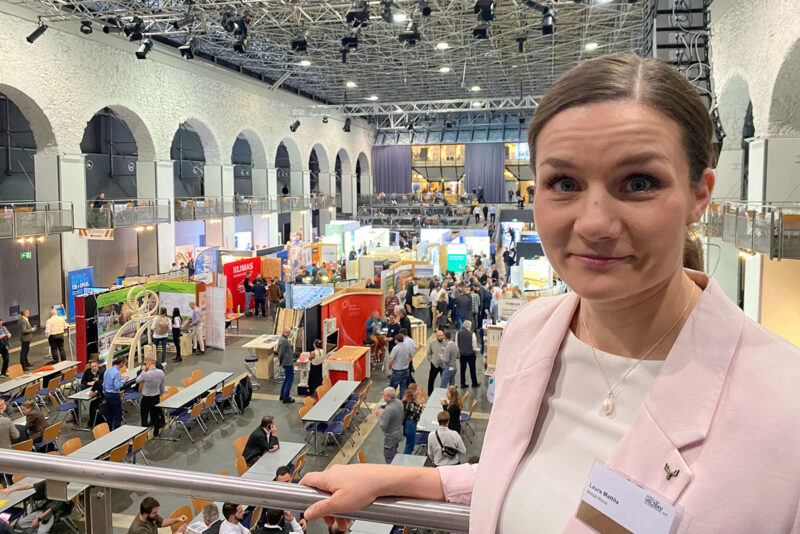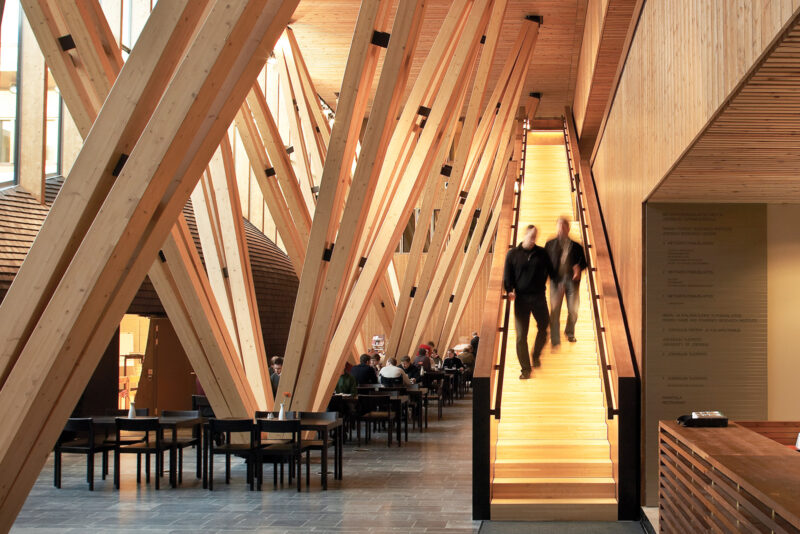Investors show interest in wood construction at trade fairs

’Wood construction is currently experiencing a breakthrough,’ says Laura Mattila, Sales Director for Kerto LVL at Metsä Group in an interview with Audiomedia.
’In the Benelux countries, for example, sustainable development is becoming the driver in construction, in the wake of the growing awareness of materials and energy efficiency during construction, the life span of buildings and the low carbon footprint of wood,’ Laura Mattila says in the interview.
Mattila has seen an enormous increase in the interest towards wood products, with issues related to climate and to the use of responsible materials becoming more important marketing points. This change has taken place during the past few years.

’We no longer need to explain the incontestable advantages of wood construction in terms of the climate. The customers already know them,’ Mattila says.
Globally, over 35 percent of the greenhouse gas emissions are due to the built environment, especially to the production of abiotic materials, such as concrete, metals and plastics.
Wood construction is becoming mainstream
Laura Mattila believes that within the next five years, wood construction will become the mainstream in construction.
’The drivers for this development will be the debate on sustainability, the promotion of low-carbon construction and the improvement in efficiency and cost competitivity. The life span of buildings is increasingly being considered in construction. In addition to being a carbon storage, wood has a potential for reuse and recycling at the end of a building’s life span.’
The life span of buildings is increasingly being considered in construction. In addition to being a carbon storage, wood has a potential for reuse and recycling at the end of a building’s life span.
According to Mattila, the average consumer in the USA is not yet concerned about the climate and sustainability issues in construction, but as buyers, large listed companies do require information on the origin of wood material. Sustainably procured wood acts as carbon storage both in the forest and in buildings.
’We are able to prove that the wood used in the prefabricated elements sold to our customers comes from sustainably managed forests, and that we use every bit of each tree as efficiently as possible,’ Mattila says.
Investors have found wood construction
Trade fairs and exhibitions in the field evidence the change in attitudes to wood construction.
’It is interesting to note the change: where the trade fairs in the field only used to attract professionals of the forest and wood sector and of construction, we now see more and more investors and people from the world of finance,’ Mattila says.
Many construction and property development companies have also noticed that wood construction, as well as hybrid construction that includes some wood products, can help achieve a forerunner status. Their customers look for environmentally friendly buildings and dwellings, and this creates new business potential for pioneers of innovative wood construction.
Another important driver increasing the interest in wood construction is architecture. Wood is an excellent material for prefabrication, allowing a considerable part of the construction to take place in industrial facilities. What happens on site is cleaner, faster, of a higher quality and less disturbing to the surroundings.
’Wood construction can also help create a brand towards consumers and investors who are interested in long-term investments,’ says Mattila.
Regulation of construction is useful
Mattila believes that for companies relying on conventional steel and concrete construction, it will be difficult to start using wood.
We have begun to talk about how to combine conventional construction with the use of wood as raw material. Bringing wood into existing practices and finding ways of combining the use of wood with construction as it is now will initiate the change from within the construction sector.
’We have begun to talk about how to combine conventional construction with the use of wood as raw material. Bringing wood into existing practices and finding ways of combining the use of wood with construction as it is now will initiate the change from within the construction sector. Even now, people see great potential in wood as something renewable and carbon-binding,’ Mattila says.
Mattila finds it good that legislation and regulation are used to steer towards low-carbon construction.
’Achieving more uniformity in carbon footprint calculations will enable comparisons that reveal accurately the differences between materials and their sustainability,’ Mattila concludes.